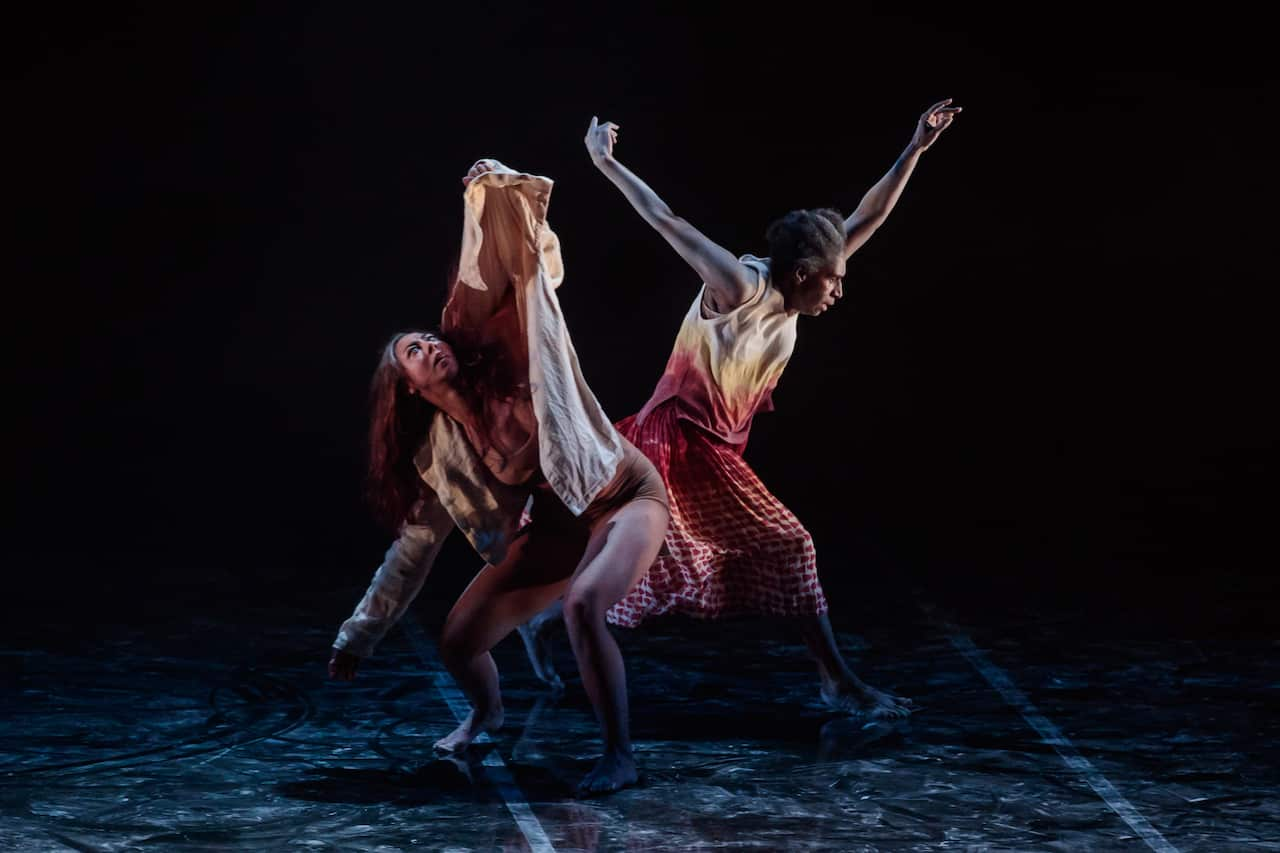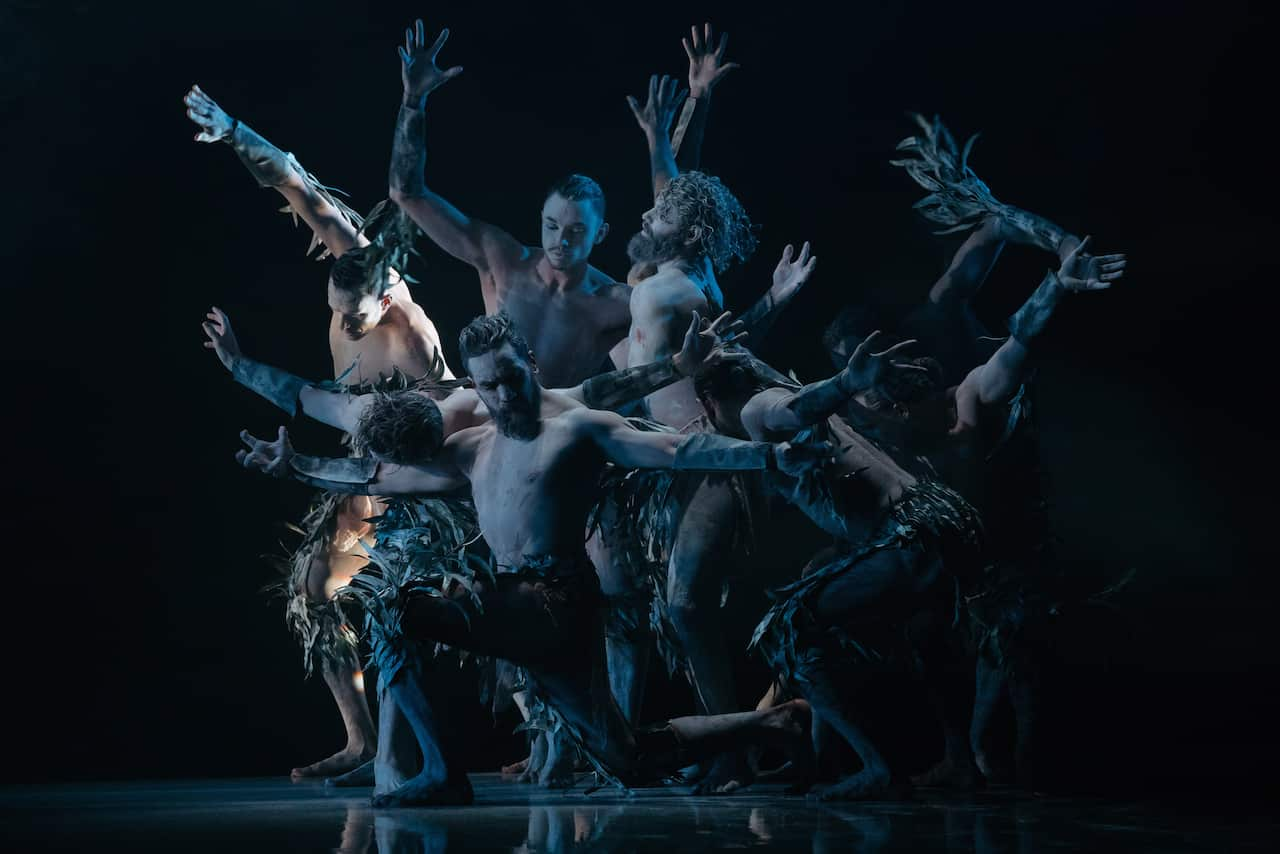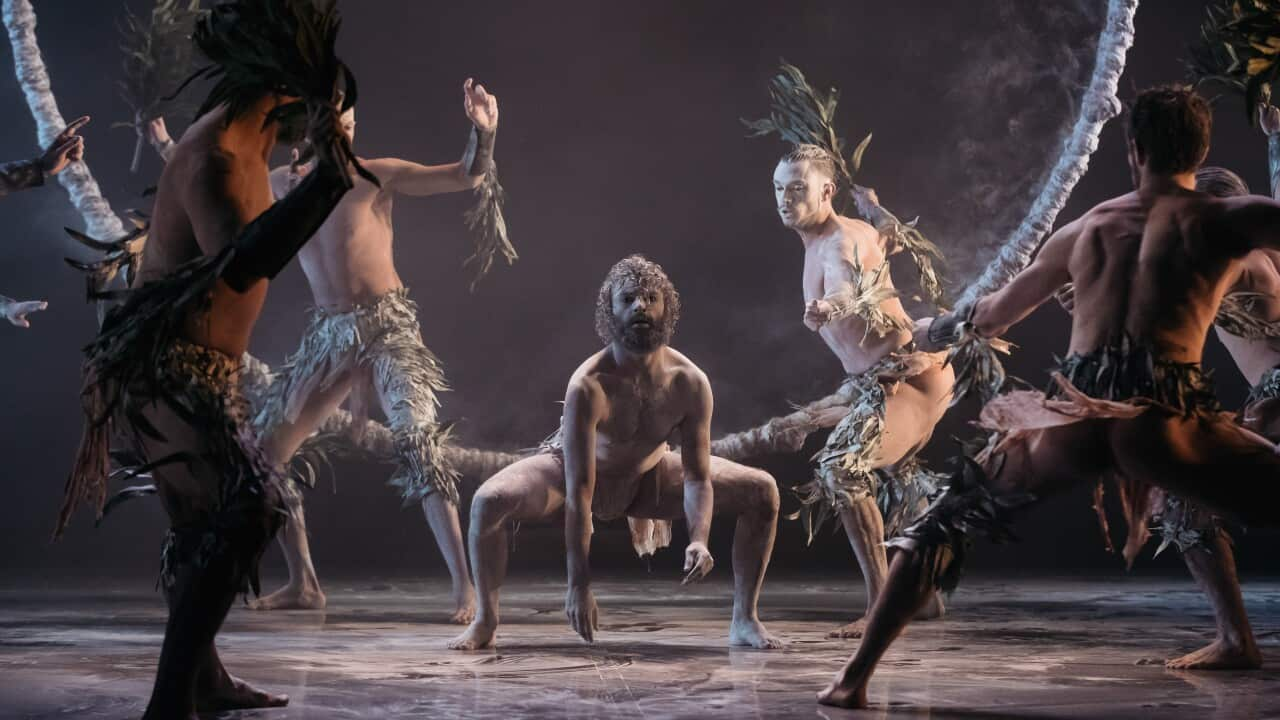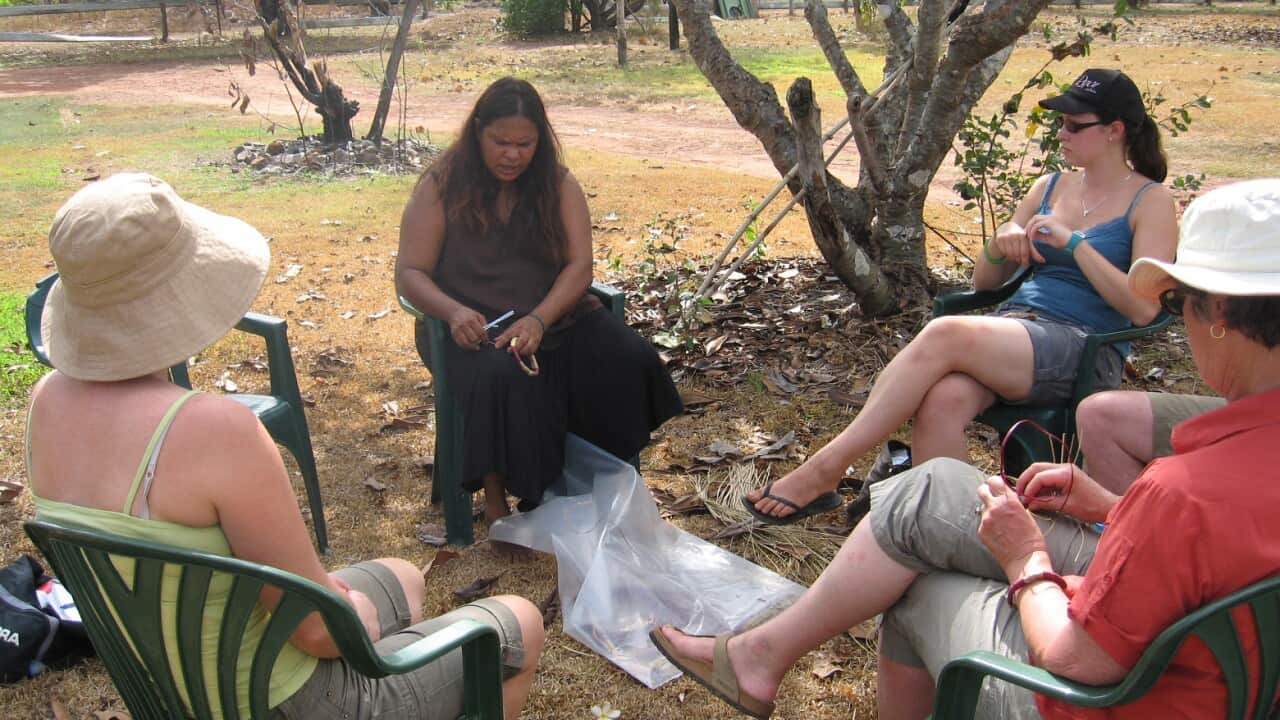“I wanted to shed a light on the stories that are not in textbooks. It’s like a soft whisper underneath.”
Who writes history? Jasmin Sheppard, celebrated Bangarra dancer and choreographer, is pondering this fact on the eve of the world premiere of Bennelong, Bangarra’s latest work last week.
It’s a break in rehearsals at the Sydney Opera House. Sheppard, 34, who plays the spirit of Indigenous icon Barangaroo – “a formidable woman who deserves her own show” – takes a moment out to chat to SBS.
“I feel that Australia’s history is everybody’s history, especially all the awful things that were written out of history books," says Sheppard.
In her sights is the writing of history: who pens it, how objective it truly is – and most importantly, whose voices are left out of the official record.
“I am really passionate about this,” Sheppard says. “I feel that Australia’s history is everybody’s history, especially all the awful things that were written out of history books.” In 2013, Sheppard, 34, a Brisbane-born dancer and choreographer raised in Melbourne who joined Bangarra in 2007, made her first attempt to retell history from an Indigenous perspective.
In 2013, Sheppard, 34, a Brisbane-born dancer and choreographer raised in Melbourne who joined Bangarra in 2007, made her first attempt to retell history from an Indigenous perspective.

Dancers Elma Kris and Jasmin Sheppard in 'Bennelong'. (Image: Daniel Boud) Source: Daniel Boud
Macq, part of the 2016 triple bill OUR land people stories, was her first choreographic work for Bangarra and premiered as part of the Dance Clan 3 program in 2013. It told the story of the 1816 Appin Massacre involving the Dharawal people, and Governor Lachlan Macquarie’s role in this.
In 2014, she played the title role in Bangarra’s Patyegarang, another powerful retelling of Australian history through Indigenous eyes.
[We] try to do it in a way that evokes the feeling of what it might have felt like for the Dharawal people back then – and also what people are dealing with today in trying to reawaken what is lost and connect back to those family members and ancestors.
For Sheppard, Macq, celebrated for its original voice and defiant energy, was “a way of breathing life into the voices of these people who have not had their stories told”.
“[We] try to do it in a way that evokes the feeling of what it might have felt like for the Dharawal people back then – and also what people are dealing with today in trying to reawaken what is lost and connect back to those family members and ancestors.”
Bangarra’s artistic director Stephen Page says Sheppard is a vital part of a new young generation of Indigenous storytellers who are bringing their own perspective to Australian history.
Bennelong, Page’s 24th work for the company, is also part of this attempt to breathe life into neglected black voices of the past.
To him, it is a small attempt to bring Bennelong the man, the Indigenous leader, communicator and pioneer, out from under layers of myth and cultural bias.
Dance is often seen as the least politically potent of the key art forms - more pretty movement than politics. But Sheppard disagrees.
If we don’t deal with what happened [in the past], it’s going to keep happening now, like we are seeing today – with the intervention still going on and people being taken off their land.
“Dance is extremely political,” Sheppard says. “As an Indigenous person and artist, dance is my platform – to be able to be political, to be able to make statements, and to be vocal in a physical way, to say, what is happening now is not right, and giving that voice to that.
"If we don’t deal with what happened [in the past], it’s going to keep happening now, like we are seeing today – with the intervention still going on and people being taken off their land.”
There is a power in dance that transcends barriers of culture and language. Dance is universal - we all understand the physical language of grief, of joy, suffering, she says.
“I experienced this a lot when I was creating Macq. When you read something on a piece of paper, it goes into your brain, and you tend to analyse and intellectualise it.
There is a power in dance that transcends barriers of culture and language. Dance is universal - we all understand the physical language of grief, of joy, suffering.
"But when you are seeing something through movement, especially live dance, you’re not just thinking about you’re seeing, you are feeling and hearing it, it’s really awakening every part of your senses. It’s also reaching your soul. And I’ve definitely experienced that when I have watched dance performances.”
“And that seems to be the common thread with all human beings, no matter where we come from. It’s almost like it reaches a knowing you might not be able to put into words – it’s greater than putting something into a sentence – it’s greater than a sentence, greater than words.” For Indigenous Australians, dance is not just a political act. It offers everything from a form of therapy – “as an Indigenous person, I definitely feel that dance is a form of healing,” Sheppard says – to a vital form of expression that unites everyone from the Indigenous sportsman – “even rugby players love to dance” – to schoolchildren.
For Indigenous Australians, dance is not just a political act. It offers everything from a form of therapy – “as an Indigenous person, I definitely feel that dance is a form of healing,” Sheppard says – to a vital form of expression that unites everyone from the Indigenous sportsman – “even rugby players love to dance” – to schoolchildren.

Bangarra's artistic director Stephen Page says dance is an opportunity for dancers to reconnect to country, kinship, customs and practices. (Image: Daniel Boud) Source: Daniel Boud
And like sport, it offers pathway out of disadvantage, with Indigenous dance training college NAISDA sporting a proud record in recruiting and training dancers from all over the country, including remote and rural communities.
“For myself as an Indigenous person, my family has lost their dances through the White Australia policy, and so dance has been a really beautiful part of reconnecting my spirit and my heritage," says Sheppard.
But most vitally, it is a way of reclaiming culture and reconnecting to lost roots, a way of finding your way back home – particularly for urban Indigenous youth who have no ties to language, country and custom, she says.
This is the case for Sheppard, whose people hail from the Gulf of Carpentaria in Australia’s north (“my nanna was born in Croydon – she’s there as we speak and I’m very jealous, I wish I was there now”)
“For myself as an Indigenous person, my family has lost their dances through the White Australia policy, and so dance has been a really beautiful part of reconnecting my spirit and my heritage.
"Dance is a form of pride and not shame and it’s a way a lot of people have been able to reawaken their culture and find their stories and spirit through movement.”
Bangarra’s artistic director Stephen Page concurs. “When you look at Bangarra, 90 per cent of our dancers come from contemporary backgrounds – a lot of them don’t come connected to living language or practices.
“So dance gets our dancers to reconnect to country, kinship, customs, and practices.”
He talks about celebrating Bennelong's birth in the show. "We are giving him a legacy ceremony that celebrates his birth - we call it the 'five names birth' because he was given five names. Not a lot of us get given five names so he must have been some sort of statesman - there was a leadership purpose he was going to fill in the future, that he may have been the one to take on the Western system."
“When you look at Bangarra, 90 per cent of our dancers come from contemporary backgrounds – a lot of them don’t come connected to living language or practices. So dance gets our dancers to reconnect to country, kinship, customs, and practices,” says Page.
For Sheppard, Bennelong, the company’s new work, is testament to how dance can shine a light on dark corners of misunderstanding and ignorance.
“It is a story from all those years ago, but it is still so important today.
“I was at the Opera Bar [at the Sydney Opera House] last weekend after our first Koori night performance, and the lady behind the bar asked, ‘which Bangarra performance is this?’. And I said ‘Bennelong’. And she said, ‘no, which performance are you doing? And I said again, ‘Bennelong.’ And she said, ‘oh. I thought Bennelong was a restaurant’.”
Sheppard chuckles. “So there you go. That is the political stance - what dance can do.”
Reveal, educate, inspire, reconcile, and help all of Australia engage with Indigenous Australia – a vital message for NAIDOC week this week.
is held in the first full week of July. It is a time to celebrate Aboriginal and Torres Strait Islander history, culture and achievements.
The 2017 theme - Our Languages Matter - aims to emphasise and celebrate the unique and essential role that Indigenous languages play in cultural identity, linking people to their land and water and in the transmission of Aboriginal and Torres Strait Islander history, spirituality and rites, through story and song.
Bennelong will run at the Sydney Opera House until 29 July and then tour around the country. To find out dates and details, click .




